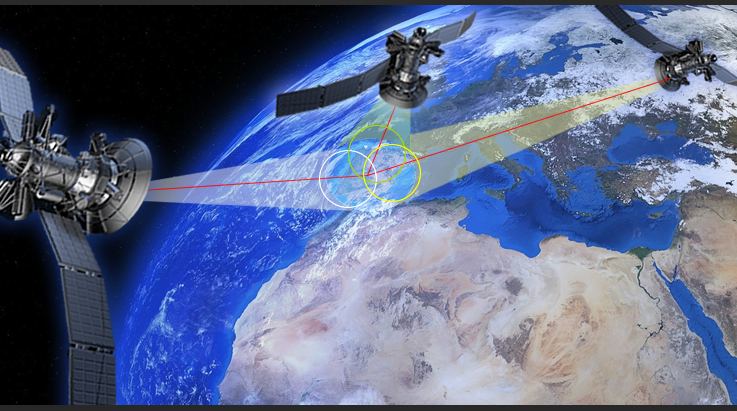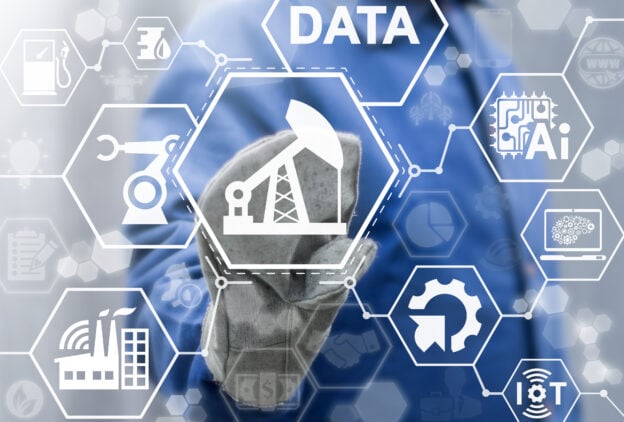Table of Contents
Exploration technology 4.0 is characterized by the integration of advanced technologies in the exploration and production processes, having a significant impact in various sectors. Over a long period of time, the oil industry has been driven by the continuous search for new oil reserves in order to meet the growing global demand for energy.
The extraction of hydrocarbons in deep waters poses specific challenges that must be addressed with cyber security and resilient communications criteria, in order to prevent the loss of information and possible cyber attacks on intellectual assets.
Industry 4.0, based on advanced innovations such as artificial intelligence, Big Data, geophysics and the Internet of Things (IoT), are opening up new frontiers and revolutionizing the way oil reserves are searched for and found.
Advances in scanning technology 4.0
In oil industry 4.0, it refers to the application of advanced digital technologies and data analysis techniques in the oil and gas exploration process. This new era of exploration seeks to harness the power of technology to improve oil exploration efficiency, precision and effectiveness in the search for hydrocarbon reserves.
Industry 4.0 incorporates various technologies and approaches, such as:
Big Data and data analysis
The oil industry generates large volumes of data, including seismic data, drilling data, geological data, among others. Exploration 4.0 uses advanced data analysis techniques and machine learning algorithms to extract valuable information and identify patterns and trends, and improve decision making.
These advances in data storage and processing technologies have enabled the oil industry to manage large sets of information efficiently and extract important insights.
Predictive analytics, powered by big data, is one of the most promising applications in oil exploration. By combining geological and operational data with predictive models, oil companies can identify areas with high potential to find oil reserves. This allows for a more precise allocation of resources and a reduction in the costs associated with exploration.
Additionally, big data analytics can help optimize production from existing oil fields. By monitoring production data in real time, patterns and anomalies can be identified that indicate the need to adjust operations to maximize efficiency and extend reservoir life.
Artificial intelligence (AI) in oil exploration
This application in exploration technology has proven to be a powerful tool in oil exploration. Thanks to advanced algorithms and massive data processing, it can analyze large volumes of historical, geological, and seismic information to identify patterns and trends that may indicate the presence of oil reserves. AI systems can autonomously learn and improve their accuracy over time, enabling geologists and data scientists to make more informed decisions about where to drill wells and conduct exploration.
The use of artificial intelligence in satellite exploration (figure 1), allows oil and gas companies to quickly acquire and analyze large amounts of satellite imagery to identify potential oil and gas deposits. These satellites use a variety of sensors to detect minute differences in the earth’s surface, including changes in soil moisture, temperature, and vegetation. This data can be used to identify areas that may contain oil deposits.

AI is also used in the interpretation of seismic images and the generation of three-dimensional models of the subsurface. Machine learning algorithms can identify key geological features and help predict the distribution and extent of oil reserves. This reduces the need to run costly exploratory drilling and minimizes the risks associated with exploration.
Shell Plc applies a new AI technology in deepwater oil exploration, SparkCognition AI- based technology, using fewer seismic data sweeps than usual, speeding up exploration workflow and saving computing costs high perfomance. This process can shorten scans from nine months to less than nine days.
Sensors and Internet of Things (IoT) technology
Advances in sensors and IoT technology make it possible to collect real-time data from drilling rigs, wells, and other exploration assets. This data is used to monitor and optimize operations, improve safety, and reduce costs.
Advanced modeling and simulation
Computer models and advanced simulations are used to create virtual representations of the subsurface and simulate different exploration scenarios. These models help to better understand the geological structure, evaluate the potential of the reservoirs and optimize drilling strategies.
Virtual and augmented reality
Virtual and augmented reality are used to create immersive virtual environments that allow the subsurface to be viewed and explored in a more interactive way. This facilitates the interpretation of the data and helps in decision making.
Advanced geophysics and high-resolution seismic
Geophysics plays a determining role in the efficiency of oil exploration, providing information on the structure and composition of the subsoil. With the advent of exploration 4.0 , high-resolution seismic and advanced geophysics technologies have been developed that enable more detailed visualization of the subsurface.
High-resolution seismic uses controlled power sources and sensitive receivers to capture high-quality seismic data; which are used to build detailed models of the subsurface, identify structural traps and predict the location of oil reserves.
Advanced geophysics includes techniques such as magnetometry, gravimetry, and electromagnetism, which provide additional information about the properties of the subsurface. By combining these techniques with the analysis of geological and seismic data, a more complete and accurate picture of oil reserves is obtained.
Conclusion
exploration 4.0 is opening new frontiers in the search for oil reserves and providing a solid foundation for the energy future. They are contributing to a more efficient management of existing oil fields, resulting in higher production, optimization of discovery efforts and an extension of the useful life of the fields.
If you are interested in learning more about the subject, there is a lot of content on the Internet. Next, I include some links of interest as sources:
References
https://www.worldenergytrade.com/oil-gas/investigacion/shell-tecnologia-exploracion-petroleo-18697


